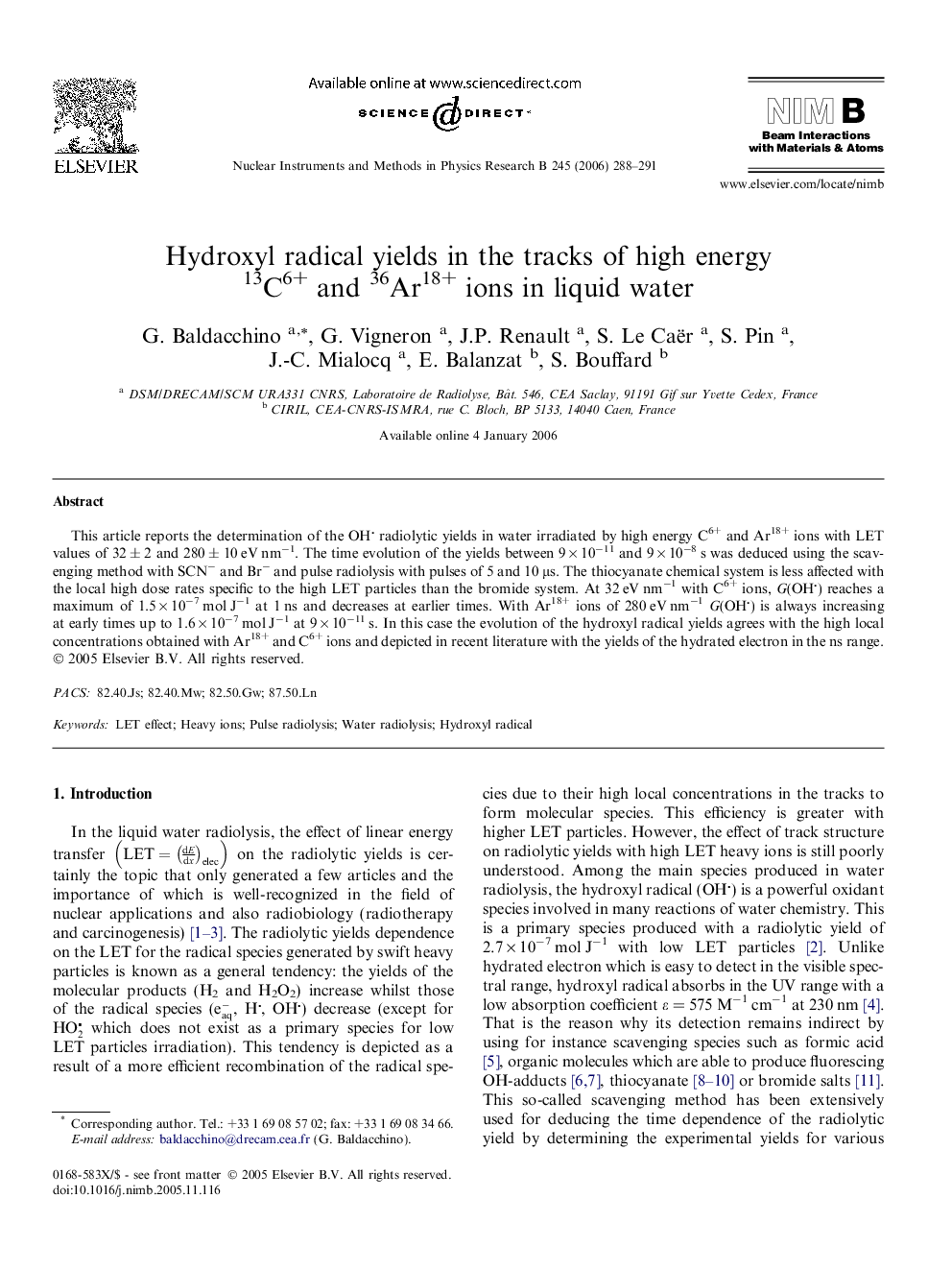| Article ID | Journal | Published Year | Pages | File Type |
|---|---|---|---|---|
| 1687194 | Nuclear Instruments and Methods in Physics Research Section B: Beam Interactions with Materials and Atoms | 2006 | 4 Pages |
Abstract
This article reports the determination of the OH radiolytic yields in water irradiated by high energy C6+ and Ar18+ ions with LET values of 32 ± 2 and 280 ± 10 eV nmâ1. The time evolution of the yields between 9 Ã 10â11 and 9 Ã 10â8 s was deduced using the scavenging method with SCNâ and Brâ and pulse radiolysis with pulses of 5 and 10 μs. The thiocyanate chemical system is less affected with the local high dose rates specific to the high LET particles than the bromide system. At 32 eV nmâ1 with C6+ ions, G(OH) reaches a maximum of 1.5 Ã 10â7 mol Jâ1 at 1 ns and decreases at earlier times. With Ar18+ ions of 280 eV nmâ1G(OH) is always increasing at early times up to 1.6 Ã 10â7 mol Jâ1 at 9 Ã 10â11 s. In this case the evolution of the hydroxyl radical yields agrees with the high local concentrations obtained with Ar18+ and C6+ ions and depicted in recent literature with the yields of the hydrated electron in the ns range.
Keywords
Related Topics
Physical Sciences and Engineering
Materials Science
Surfaces, Coatings and Films
Authors
G. Baldacchino, G. Vigneron, J.P. Renault, S. Le Caër, S. Pin, J.-C. Mialocq, E. Balanzat, S. Bouffard,
